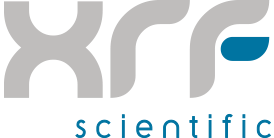Latest News
News
Glass Bead Machines: Gas or Electric Fusion?
X-ray fluorescence (XRF) analysis is a sensitive process that enables researchers to observe the elemental composition and concentration of samples non-destructively, but these samples must be carefully prepared to provide actionable data for any application. Granulated powders, for example, may exhibit surface area irregularities that can introduce errors to analytical processes. To acquire better insights into homogenous XRF reactions, researchers commonly prepare samples using glass bead machines.
A glass bead machine uses borate fusion to dissolve oxidized solid sample particles in a flux mixture at temperatures of up to 1250°C (2192°F). The molten mixture is then cast in a mold and cooled to produce seamless sample beads for XRF analysis. These temperatures can be generate...

Outlining Common ICP Applications
Inductively Coupled Plasma (ICP) spectroscopy is a sensitive chemical analysis method for determining the chemical composition samples using an electromagnetically-charged apparatus. It uses gas flow techniques to collide nebulized liquid samples with extremely hot plasma, and mass spectroscopy equipment to analyze the ionization of gas particles flowing through the plasma channel.
XRF Scientific previously explored the processes and mechanisms of ICP spectroscopy in greater depth, but this article will explore some of the most common ICP applications in more detail:
Trace Element Determination
The primary ICP application is for the atomic determination of trace elements in liquid samples. Ionized particles are measured in an optical sample chamber ...

Spectrometer Calibrations from XRF Scientific
XRF spectrometer calibrations are crucial processes to maintain an instrument’s highly discerning levels of precision. The x-ray output in an XRF spectrometer is initially calibrated to minute degrees, ensuring the acquisition of precise optical results by a fluorescence detector. However, x-ray output tubes are subject to low levels of drifting that can severely impact the accuracy of results over time. Regular spectrometer calibrations are necessary to correct x-ray tube drifting and maintain precise measurement parameters.
...









